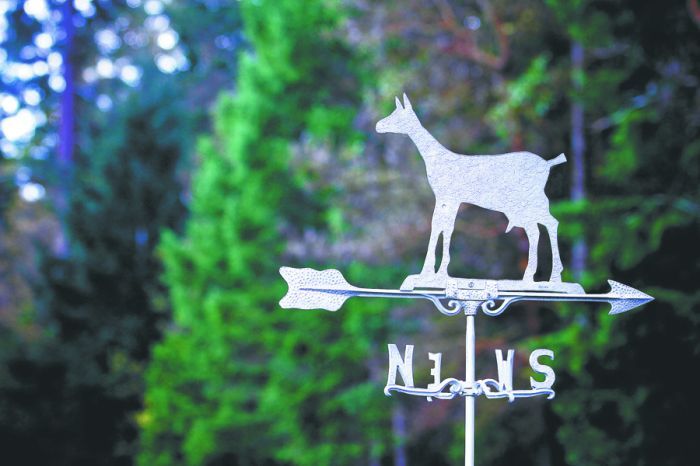Weather and the Wedge

By Christine Hyatt
While it is well known that wines from different AVAs (American Viticultural Areas) often display their own distinct characteristics, it is not so common to think of cheeses in this regional way. But as the terroir-talking trend applies to more and more culinary categories, cheese definitely enters the discussion.
Terroir encompasses climate, geography and soils of a certain location, but I will focus mostly on climate, and its effect on animals and their food, leaving the complex topics of the latter two for a future article.
Oregon is the perfect case study for how climate impacts cheese because of its variety of landscapes, from lush valleys to dry deserts and everything in between.
Even though American cheesemakers do not have regions delineated and officially sanctioned like the AVAs, it is fascinating to discover how a cheese from one region is different from another and, consequently, why certain types of dairies have made their homes in specific locales.
It has long been observed that Oregon is nearly perfect for raising any type of dairy animal. American sailor and diplomat William A. Slacum first noted in 1836: “I consider the ‘Wilhamett’ the finest grazing country in the world … the ground abounds with richer grasses both in winter and summer.”
Grazing cows are well suited to the lusher areas of Oregon. They need consistent access to green pastures and fresh grass in order to yield the highest quality milk. The milk produced by cows in these fertile regions makes for cheeses as diverse as Tillamook Cheddar and Willamette Valley Gouda and Rogue Oregon Blue.
The ideal climate for goats is not exactly the same for cows, which is why many chèvres come from drier climates like the high desert around Bend. Goats are not fond of damp weather and will retreat to the barn when it rains. The upside to the downpour is lush pastures, which the animals are eager to savor when the sun shines.
The Oregon Coast is a different story and a different type of cheese. “In the summertime we’re just as warm as the Willamette Valley, but at night we cool down drastically, and the fog will roll in from the ocean,” says Pat Morford of Rivers Edge Chèvre near Newport. “We have a lot of different climate influences here where we live, and I think that a lot of that has to do with the way our cheeses turn out.”
The higher humidity and cooler evening temperatures allow ideal ripening for the creamery’s surface-ripened cheeses, a Rivers Edge specialty. In less humid regions, producing bloomy-rinded cheeses can be more of a challenge.
Just as cows and goats have an ideal climate, so do sheep. These hardy animals prefer cooler, dry areas such as the high desert, where Oregon’s only sheep dairy is located. You can be sure that is no coincidence. When Paul Obringer decided to relocate Ancient Heritage Dairy from the Willamette Valley, he looked to the high desert of Madras, where he can easily grow fertile pastures of alfalfa, the perfect grazing source for his flock of East Fresian sheep.
Perhaps the Oregon cheese that most embodies the idea of terroir is Rogue Creamery’s Rogue River Blue. The cheesemakers envisioned this product as a perfect reflection of Southern Oregon in regard to seasonal weather and the nearby vineyards, too.
This multi-award-winning and limited-production cheese is made only between the end of October and late November to early December, when the cows are no longer on pasture. Late-season milk at the end of the cows’ lactation cycle is rich and flavorful as late summer rains and cooler temperatures have rejuvenated grasses from summer swelter.
Wheels are hand wrapped in Syrah grape leaves picked at the height of summer at Carpenter Hill Vineyards, just miles from the creamery. The cutting process allows more sun to reach and ripen the grapes. Leaves are cleaned and macerated in pear brandy from Clear Creek Distillery in Portland, further anchoring the blue to its region. This is truly a cheese that could not be made anywhere else.
While the variations in cheesemaking climates may not be quite as prominent or as official as the state’s AVAs, they still have a noticeably important influence on the Oregon cheeses we know and love.
Christine Hyatt is a photographer, videographer and cheese advocate who loves to hear from cheese lovers on Facebook @CheeseChickProductions.












